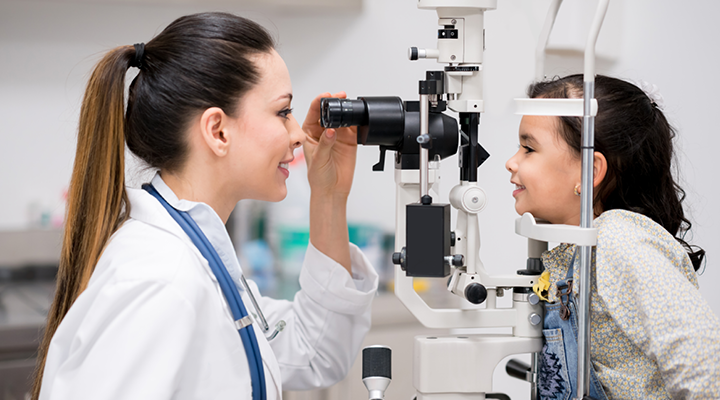You know to visit the dentist twice yearly for preventive check-ups, but did you know that annual comprehensive eye exams are equally important?
Approximately 6.8% of children in the United States have been diagnosed with a vision or eye condition, according to the Centers for Disease Control and Prevention (CDC). However, children with undiagnosed vision problems may be suffering in silence from side effects, including headaches, short attention spans, fatigue and difficulty in school.
It’s important to visit an eye doctor for a comprehensive exam (not just a vision screening) every year to protect your kids’ vision and detect and treat any problems early.
Eye exams are vital for kids’ vision and eye health
Comprehensive eye exams are essential for children, and it’s important to note that a comprehensive eye exam is different from a vision screening. During the exam, an eye doctor will observe things such as visual acuity, visual function and eye health, the curvature of the cornea, and refraction. They will also document the vision health of your children to determine if any changes occur over time.
In addition, regular exams can reveal early warning signs of more serious overall health conditions. An eye doctor can detect signs of hypertension, cardiovascular disease and even diabetes. They also check for cataracts, glaucoma, macular degeneration and other vision impairments.
Eye exams help improve kids’ vision
Comprehensive eye exams allow you to see exactly how well — or not — your child can see. It’s common for someone to think they have perfect eyesight until they get a pair of glasses or contact lenses. This is especially true for children, who might not realize they are experiencing vision problems. Seeing a vision doctor early can help spare time spent squinting and struggling to see while offering a chance to get the proper vision correctors if needed.
Protect your kids’ vision with annual eye exams
The American Optometric Association recommends that infants have an initial eye exam between six and 12 months of age. Preschoolers aged three to five should be seen once. When a child enters school, or at about six years of age, it’s encouraged that they are seen annually.
If you suspect a vision injury or potential loss of eyesight, or your child complains about blurred vision, visit your provider as soon as possible.
Vision insurance from Delta Dental of Virginia helps keep your family’s eyes healthy
Delta Dental of Virginia offers DeltaVision plans for individuals and employers. These plans cover exams, frames, contact lenses and even laser correction procedures, as well as discounts on lenses at participating providers.
Interested in learning more about DeltaVision? Click here.
*Updated January 2024

